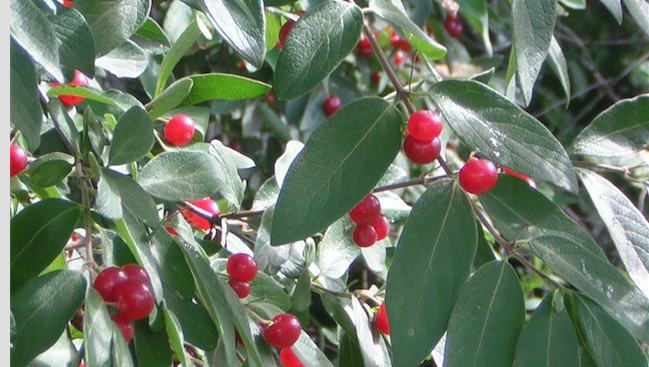Globalism, and the resulting trade with nations in Europe and Asia, has wreaked havoc on the flora and fauna of North America.
Trade with foreign nations has intentionally, or unintentionally, brought non-native plants and animals to the U.S. and Canada that threaten ecosystems, and the very existence of some of our most important native species.
The devastation caused by these exotic, invasive species, has intensified in the past decade. Asian carp, the silver and bighead carp, are high profile examples that garner much of the outdoor media’s attention, but there are many more examples.
Here’s the details on seven of the most egregious organisms.
* Insects
Emerald Ash Borer
Drive down any Central Kentucky highway during the summer months and bare, gray tree limbs are highly visible among the forest greenery.
These are dead ash trees, killed by the Emerald Ash Borer (EAB). This green, exotic beetle (Agrilus planipennis), feeds on green ash, black ash, white ash, and blue ash trees. The blue ash is a heirloom species in Kentucky, with some individual trees in the Inner Bluegrass Region alive since the 18th century.

The natural range of the emerald ash borer is eastern Russia, northern China, Japan and Korea.
The emerald ash borer probably arrived in the U.S. on solid wood packing material carried in cargo ships or airplanes originating from Asia. Since its discovery, EAB has killed hundreds of millions of ash trees in North America, and some botanists believe EAB could eventually kill 8.7 billion ash trees on the continent.
EAB has caused regulatory agencies to enforce quarantines and fines to prevent potentially infested ash trees, logs or hardwood firewood from moving out of areas where EAB occurs, and cost municipalities, property owners, nursery operators and forest products industries hundreds of millions of dollars.
Discovered in southeastern Michigan near Detroit in the summer of 2002, adult beetles nibble on ash foliage but cause little damage. The larvae (the immature stage) feed on the inner bark of ash trees, disrupting the tree’s ability to transport water and nutrients.
The Emerald Ash Borer is now confirmed in 26 states and two Canadian provinces, from Minnesota, east to New Hampshire, south to Georgia and west to Colorado.
Its presence was confirmed in Kentucky in the spring of 2009. This spring and summer three more states were added to the list — Texas, Nebraska and Delaware.
Hemlock Woolly Adelgid
Imagine the Appalachians devoid of hemlock trees — giant monarchs of the mountain forests that shade hiking trails, keep stream valleys cool and moist for rhododendron and native wildflowers, and stream waters cold for rainbow and brook trout.
That’s what could happen because of the Hemlock Woolly Adelgid (Adelges tsugae).
It feeds by sucking sap from hemlock trees. This destructive pest threatens both the eastern hemlock and the Carolina hemlock.
Accidentally introduced to North America from Japan, the insect was first found near Richmond, Virginia, in the early 1950s.
The pest has now been established in 18 eastern states from Georgia to Massachusetts, including Kentucky. As of 2015, about 90 percent of the geographic range of eastern hemlock in North America has been impacted.
Cold temperatures and the absence of host trees may be slowing its northward advance.
The presence of the insect can be identified by its egg sacs, which resemble small tufts of cotton clinging to the underside of hemlock branches. Hemlocks stricken frequently become grayish-green rather than the dark green of healthy trees.
In North America, the Hemlock Woolly Adelgid reproduces asexually and can have two generations per year. Between 100 and 300 eggs are laid in the woolly egg sacs beneath the branches. Larvae emerge in spring and can spread on their own or with the assistance of wind, birds and/or mammals. In the nymph stage, the adelgid is immobile and settles on a single tree.
Feeding, which dries up the tree, causes the tree to lose needles and not produce new growth. In the northern portion of the hemlock’s range, death typically occurs four to ten years after infestation. Trees that survive the direct effects of the infection are usually weakened and may die from secondary causes.
A 2009 study conducted by scientists at the U.S. Forest Service’s Southern Research Station suggests that the insect is killing hemlock trees faster than expected in the southern Appalachians, and some researchers believe the pest could kill most of the region’s hemlock trees within the next decade.
* Plants
Asian Bush Honeysuckle
With its bright colored berries and fragrant flowers, the Amur Honeysuckle (Lonicera maackii) may seem like a good candidate for landscaping.
But in the plant world, appearances can be deceiving.

Imported into the U.S., bush honeysuckle was introduced with good intentions. It was planted throughout Indiana from the 1950s to 1970s in home and urban landscaping, but escaped and is now a major invasive species, present in more than 30 states in the eastern U.S.
The Amur Honeysuckle (Lonicera maackii) is a bush species native to China, Mongolia, Korea and Russia, named for the Amur River, the world’s eighth longest river, which forms the border between Russia and Manchuria.
The deciduous, large shrub can grow up to 15 feet tall, and flowers from mid-spring to early summer.
Its fruit is a bright red to black semi-translucent berry containing numerous small seeds. These high carbohydrate “treats,” that ripen in autumn, are eaten by birds, which disperse the seeds in their droppings. That’s why bush honeysuckle often grows in fencelines and roadways, especially along interstate highway corridors, where there is good habitat for songbirds.
Bush honeysuckle can form extremely dense thickets in forest understories, shading out, and out-competing native shrubs, young trees, and wild flowers. This species poses a serious threat not only to the diversity of ecosystems that are invaded, but to forest regeneration itself.
Eradication is costly and labor intensive.
Bush honeysuckle is best controlled by mechanically ripping the shrubs out of the ground, cutting, or burning the plant to root level. To ensure eradication, stumps that are cut should be treated with herbicides.
* Freshwater Clams and Fish
The discharges of ballast water from overseas freighters into the St. Lawrence Seaway, caused the establishment of three exotic species in the Great Lakes, and connected waterways in the U.S. and Canada.
The Zebra Mussel (Dreissena polymorpha) native to the lakes and seas of southern Europe and Asia that was first discovered in North America in 1988. They were released with a discharge of cargo ship ballast into Lake St. Clair, a lake and river system connecting Lake Huron and Lake Erie. By 1990, zebra mussels were found in all the Great Lakes.
According to the U.S. Geological Survey, zebra mussels became established in Kentucky by 1994, with populations well established in the main stem of the Ohio River and its major tributaries, with their spread most likely linked to barge traffic.

Of the 103 species of mussels native to Kentucky, 20 have completely disappeared from the state, and 36 more are considered rare or endangered
Zebra mussels get their name from a striped pattern commonly seen on their shells. They are about the size of an adult fingernail, but can grow to a maximum length of nearly two inches. Shells are D-shaped, and attached to the substrate with strong byssal (filament-like) threads.
Their propensity for heavy colonization, and the fact that they are filter feeders, are the two main problems with the species. They clog up municipal water intakes and deprive game fish species of plankton, needed to survive when in their larval stage of development.
Their colonization of hard surfaces also leads to their spread, hitching a ride on barge, freighter and recreational boat hulls.
But their most alarming threat is to native mussel species, which they can colonize and overwhelm, leading to their eradication. Of the 103 species of mussels native to Kentucky, 20 have completely disappeared from the state, and 36 more are considered rare or endangered.
Zebra mussels pose a direct threat to Kentucky’s native mussel species, and have become an invasive species in many countries worldwide.
The Quagga Mussel has a striped and/or zig-zagged pattern and is slightly larger than the zebra mussel. At this time populations are confined to a handful of states, mostly in the Great Lakes region.
Quagga mussels are filter feeders, using cilia to pull water into its shell cavity through an incurrent siphon.
Each adult mussel is capable of filtering about a gallon water each day, removing the phytoplankton and zooplankton needed by young fish, thus altering the food web.
The quagga mussel is a prolific breeder, possibly contributing to its spread and abundance — first observed in North America in September, 1989, when it was discovered in Lake Erie. It was not identified as a distinct species until 1991.
The impacts associated with the filtration of water include increases in water transparency, decreases in chlorophyll concentrations, but most alarmingly, the accumulation of organic pollutants in their tissues and waste, which are passed up the food chain to game fish, consumed by humans.
The Round Goby (Neogobius melanostomus) is a small, bottom-dwelling fish native to central Eurasia, including the Black Sea and Caspian Sea.
Large, non-native populations have been established in the Baltic Sea, several major Eurasian rivers, and the Great Lakes. Round gobies are small, soft-bodied fish, characterized by a distinctive black spot on the first dorsal fin. Their eyes are large and protrude slightly from the top of the head. Round gobies are typically four to 10 inches in length, and males are larger than females.
Round gobies actively feed at night and during low light period, eating mollusks, crustaceans, worms, fish eggs, small fish and insect larvae. The consequences of this invasive species are complex as the fish both competes with native species and provides an abundant source of food for them (bass, lake trout, whitefish and walleye), while consuming other invasive species.
For more outdoors news and information, see Art Lander’s Outdoors on KyForward.
An aggressive fish, the round goby outcompetes native species such as the sculpin and log perch for food (snails and mussels), and preys heavily on the eggs of native game fish species, to the angst of anglers.
They consume large numbers of invasive zebra and quagga mussels, which results in an accumulation of toxins (such as PCBs) in the food chain. Also, researchers have found that gobies in the Great Lake are a reservoir for some 25 species of parasites.
* Reptiles and Amphibians
The Florida Everglades, a low-lying land of ponds, sloughs, sawgrass marshes, hardwood hammock, and forested uplands, has become home to one of the world’s largest snakes.
The Burmese Python (Python bivittatus), native to Southeast Asia, is semi-aquatic. Adults average 12 feet in length, but have been known to reach longer than 18 feet.
The pet trade is responsible for this problem in south Florida. Burmese pythons either escaped, or were intentionally released from captivity beginning in 1992, in the aftermath of Hurricane Andrew. According to officials at Everglades National Park more than 2,000 pythons have been removed from the park and surrounding areas since 2002, likely representing only a fraction of the total population.
The introduction of the snake to the Everglades has had devastating consequences.
A 2012 report found that in areas where the snakes are well established, foxes and rabbits have disappeared. Sightings of raccoons are down by 99.3 percent, opossums by 98.9 percent, and white-tailed deer by 94.1 percent. Bird and coyote populations are also threatened, as well as the rare Florida panther.
Cold winter temperatures, which the snakes can’t tolerate, are preventing their range expansion northward.
The importation of Burmese pythons was banned in January 2012 by the U.S. Department of the Interior.
Art Lander Jr. is outdoors editor for NKyTribune and KyForward. He is a native Kentuckian, a graduate of Western Kentucky University and a life-long hunter, angler, gardener and nature enthusiast. He has worked as a newspaper columnist, magazine journalist and author and is a former staff writer for Kentucky Afield Magazine, editor of the annual Kentucky Hunting & Trapping Guide and Kentucky Spring Hunting Guide, and co-writer of the Kentucky Afield Outdoors newspaper column.























This is the most important article ever printed by the NKYT … the real environmental disaster is not anthropogenic climate change, it is invasive species … 1/4 of the forest in NKY appears to be gone due to the Ash Borer … all in the last 5 years … nice job, Art!